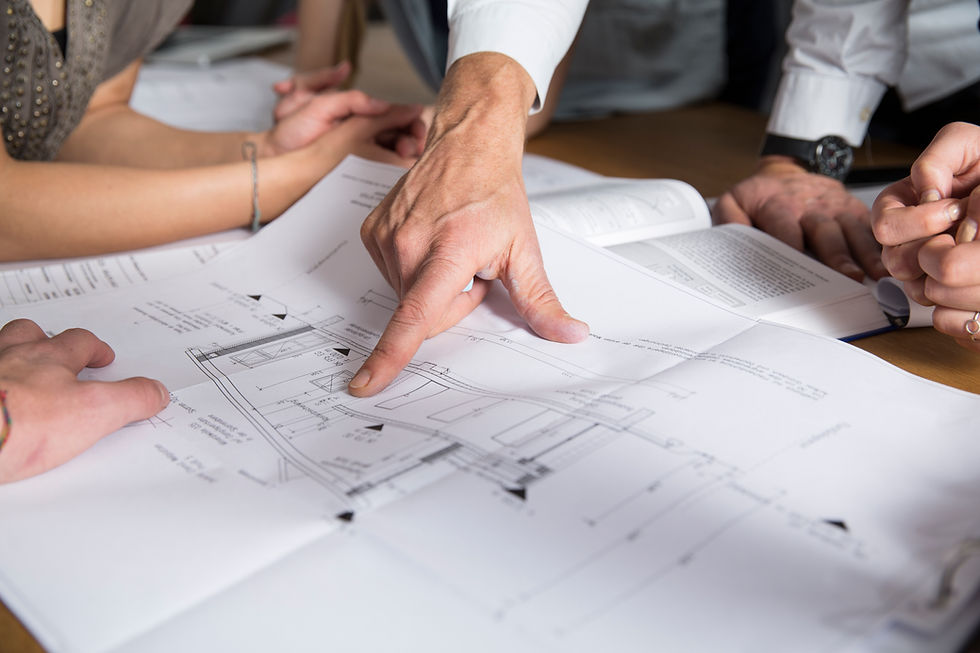Top 5 Mistakes to Avoid When Building a Deck on Your Own
- JCS

- Feb 14
- 3 min read
Updated: Feb 16
Building your own deck can be a rewarding DIY project that adds value to your home and enhances your outdoor space. However, it’s easy to make costly mistakes that can compromise safety, durability, and aesthetics. To make sure your deck is sturdy and beautiful, avoid these five common pitfalls in building a deck on your own.
Top 5 Mistakes to Avoid When Building a Deck on Your Own

1. Ignoring Local Building Codes and Permits
One of the biggest mistakes DIY deck builders make is skipping the research on local building codes and permit requirements. Many municipalities require permits to ensure decks meet safety and structural standards. Failing to comply can result in fines, forced removal, or even potential liability issues if an accident occurs.
Solution:
Before you start, check with your local building department to understand the regulations and apply for the necessary permits. This step will save you time, money, and headaches in the long run.
2. Choosing the Wrong Materials
Selecting the wrong type of wood or fasteners can lead to premature wear, warping, or even structural failure. Pressure-treated lumber is a common choice for framing, but using untreated wood in areas exposed to moisture can cause rot and decay. Also make sure you use corrosion-resistant screws if you can. Using standard nails instead of corrosion-resistant screws can weaken the deck over time.
Solution:
Think about pressure-treated lumber or rot-resistant wood such as cedar or composite decking. Use galvanized or stainless-steel fasteners to prevent rust and deterioration.

3. Improper Footing and Foundation
A deck is only as strong as its foundation. If the footings are too shallow, uneven, or not properly secured, the deck can shift, sink, or become unstable. This is especially problematic in areas with frost, which can cause the ground to heave and damage your deck’s structure.
Solution:
Dig footings below the frost line to prevent shifting, and use concrete footings or piers to provide a stable base. Ensure proper spacing between posts for even weight distribution.
4. Incorrect Joist Spacing and Support
Many DIYers underestimate the importance of proper joist spacing, leading to a deck that sags or feels bouncy underfoot. Incorrect spacing can also affect the longevity and safety of the deck.
Solution:
Follow manufacturer recommendations for joist spacing based on the type of decking material you choose. Typically, 16-inch spacing is standard for most wood decks, while composite decking may require closer spacing (12 inches) to prevent sagging.

5. Skipping Proper Waterproofing and Drainage
Water damage is one of the biggest threats to a deck’s lifespan. Without proper waterproofing and drainage, moisture can accumulate, leading to wood rot, mold growth, and premature failure.
Solution:
Apply a high-quality wood sealer or stain to protect the deck from moisture. Ensure proper drainage by slightly sloping the deck away from the house and leaving small gaps between boards to allow water to escape.
Final Thoughts
Building a deck on your own can be a fulfilling project, but avoiding these common mistakes will save you time, money, and frustration. By following local codes, selecting quality materials, securing a solid foundation, properly spacing joists, and implementing good waterproofing practices, you can enjoy a safe and durable deck for years to come.
Are you planning to build a deck soon? Let us know your biggest challenges in the comments! To learn more information or to get help with a new decking project, view our other blogs or give us a call!




Comments